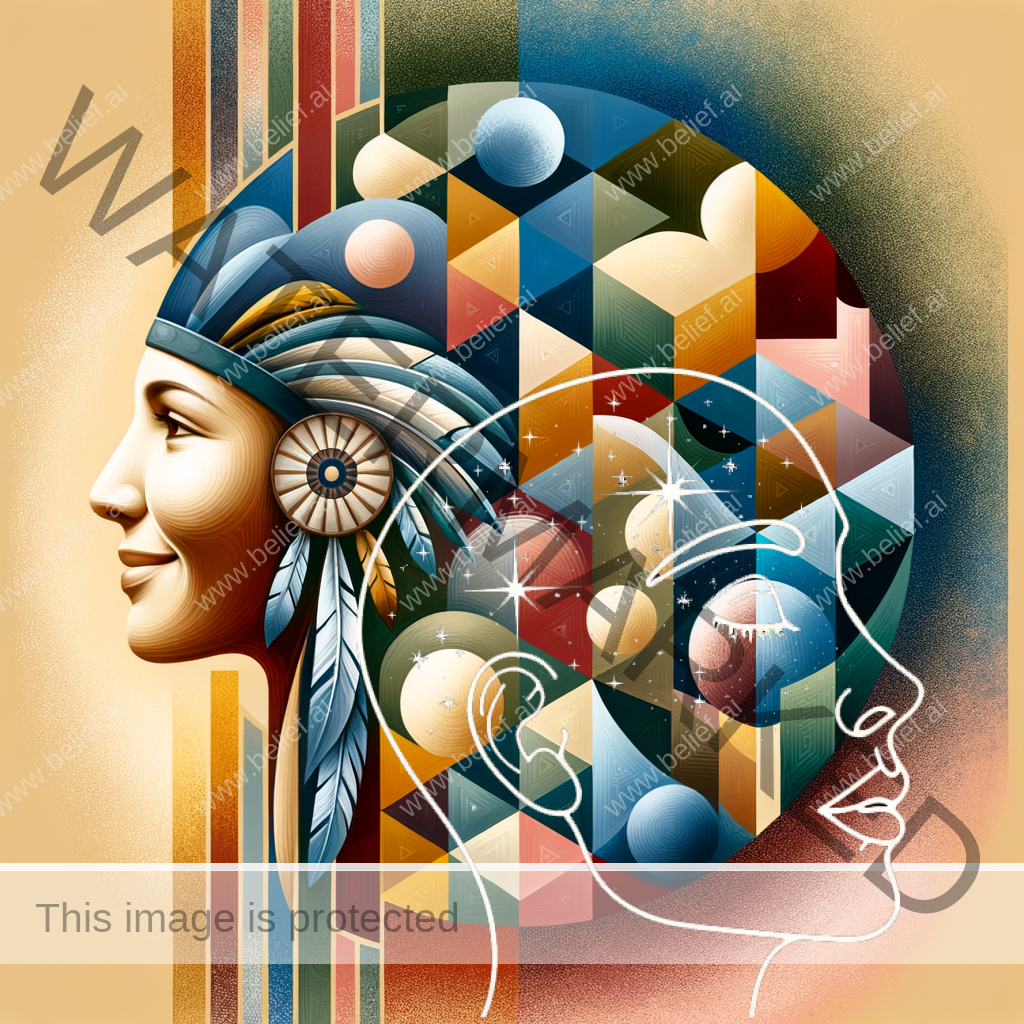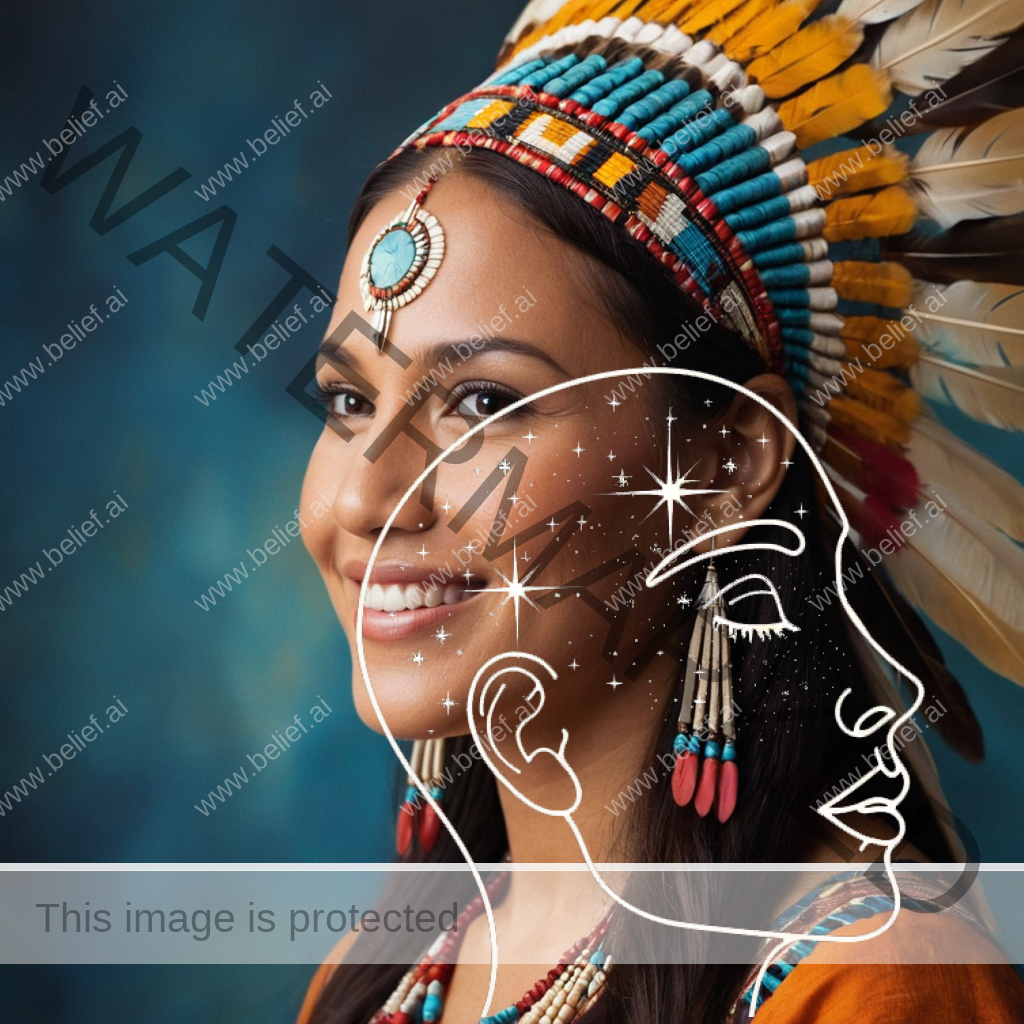Stitches in Time – The Fabric of Native American Life! Imagine the telling of stories, the passing down of traditions, the expression of identity, all intricately woven into the fabric of everyday life. As we unravel the threads, we are welcomed into a rich tapestry of culture, history, and spiritual beliefs that have shaped the Native American community over centuries. So, let’s embark on this journey together, exploring this vibrant tapestry of Native American life.
Global Distribution and Demographics
Native Americans are indigenous peoples of the Americas, particularly North America, with a rich cultural heritage dating back thousands of years. They are spread across the United States, Canada, and parts of Central and South America. As per data released by the U.S. Census Bureau in 2019, about 5.2 million people identified as American Indian or Alaska Native alone or in combination with one or more other races.

Their population distribution, however, is not uniform. Some tribes, like the Navajo and the Cherokee, number in the hundreds of thousands, while others, like the Yuchi, have fewer than 200 members. Despite the disparities in population size, each tribe has a unique culture, language, and history, contributing to the rich diversity of the Native American community.
Origin, Founders, and Key Figures
Native Americans have inhabited North America for thousands of years, long before the arrival of Europeans. Their history is not one of founders but of tribes and communities, each with their own origin stories. These stories often feature key figures, like the legendary Hiawatha of the Iroquoian tribes, who played an important role in establishing the Iroquois Confederacy.
Over time, many Native Americans have emerged as influential leaders, activists, and cultural icons. Figures like Sitting Bull, Crazy Horse, and Chief Joseph are renowned for their resistance against U.S. expansion into indigenous territories. More contemporary figures like Wilma Mankiller, the first female Principal Chief of the Cherokee Nation, and Winona LaDuke, an environmental activist, continue to inspire and fight for Native American rights.
Brief History
The history of Native Americans is a tapestry of diverse tribes and cultures intersecting with European colonization. The arrival of Europeans marked a period of significant change, starting with the Columbian exchange and leading to the devastating effects of disease, forced relocations, and cultural assimilation.

Despite these hardships, Native Americans have shown resilience and tenacity. They fought to maintain their cultural identities and fought back against oppressive policies, as seen in the Battle of Little Bighorn and the Wounded Knee Massacre. The 20th century brought about significant legislative changes, such as the Indian Citizenship Act of 1924 and the Indian Self-Determination and Education Assistance Act of 1975, marking milestones in the fight for sovereignty and civil rights.
Summary of beliefs
Native American spirituality is deeply connected to the natural world. Most tribes believe in a Great Spirit or Creator, and many of their rituals and ceremonies center around honoring the Earth, the seasons, and the cycles of life. They believe that everything in the world, animate or inanimate, possesses a spirit and should be respected.
Their spiritual practices vary widely from tribe to tribe but often involve the use of sacred objects like the medicine wheel, the dreamcatcher, and the pipe. Many tribes also engage in vision quests, sweat lodge ceremonies, and dances as part of their religious practices.
Community and Social Structures

Community is at the heart of Native American life. They traditionally lived in tribes or nations, each with its own government, language, and customs. The tribal community was often organized around clans or extended families, with responsibilities and roles divided by age and gender.
The role of women in Native American society is significant and differs widely from tribe to tribe. In many tribes, women held positions of power and were instrumental in decision-making. Elders are highly respected in the community and are considered the keepers of wisdom, tradition, and history.
Sacred Texts and Writings
Unlike many cultures that have written scriptures or holy texts, Native American tribes primarily maintain an oral tradition. Stories, legends, and moral teachings are passed down through generations through storytelling and ceremonial songs.
In recent years, many tribes have started documenting their languages, stories, and traditions in written form to preserve them for future generations. They also use symbolic writings like pictographs and petroglyphs to express their spiritual beliefs and tribal histories.
Ethical Beliefs and Moral Codes
Respect for all life forms and the environment is a cornerstone of Native American ethics. They believe in living in harmony with nature, taking only what is needed, and giving back to the Earth. There is a strong emphasis on community and cooperation over individualism and competition.
Native American teachings often speak about the Seven Sacred Virtues: wisdom, love, respect, bravery, honesty, humility, and truth. These values guide their actions and interactions, promoting a life of balance and harmony.
Cultural and Social Impact

Native American cultures have had a profound impact on art, literature, and environmentalism. Their art, characterized by intricate beadwork, basketry, pottery, and textile, reflects their deep connection to nature and spirituality. Their oral histories and legends have also greatly influenced American literature and folklore.
Their traditional ecological knowledge and sustainable living practices are now recognized and valued in modern environmental movements. Their philosophy of living in harmony with nature provides a guiding principle in the global discourse on climate change and environmental conservation.
Contemporary Issues and Challenges
Despite their resilience and cultural richness, Native Americans face numerous challenges today. Issues like poverty, unemployment, education gaps, and health disparities continue to persist in many Native American communities.
The fight for tribal sovereignty, land rights, and cultural preservation is ongoing. The Dakota Access Pipeline protests and the movement to protect sacred sites like Bear’s Ears National Monument highlight the struggles Native Americans face in protecting their ancestral lands and heritage.
The effects of climate change also pose a significant challenge to Native communities, particularly those living in regions vulnerable to rising sea levels, wildfires, and changing weather patterns. Despite these challenges, Native Americans continue to fight for their rights, steward the Earth, and preserve their rich cultural heritage.
As we take a step back to marvel at the intricate tapestry of Native American life, we see a vibrant mix of cultures, languages, and traditions, threaded together by a shared history and an enduring spirit. Each stitch tells a story of resilience, spirituality, and deep respect for the Earth. It’s a reminder of the richness of Native American life, their contributions to the world, and the importance of preserving this unique heritage for future generations.
Learn More
Learning about the beliefs, culture, and history of Native American Indian peoples involves exploring a rich tapestry of traditions, languages, and stories that span thousands of years and hundreds of tribes. Here’s a list of resources, including books and online platforms, that will help you delve into the depth of Native American cultures:
Books
- “1491: New Revelations of the Americas Before Columbus” by Charles C. Mann – This book provides a comprehensive overview of the pre-Columbian Americas, challenging the conventional historical narrative about Native American societies.
- “Bury My Heart at Wounded Knee: An Indian History of the American West” by Dee Brown – A classic account that tells the history of the United States through the perspectives of Native American tribes during the late 19th century.
- “The Absolutely True Diary of a Part-Time Indian” by Sherman Alexie – A semi-autobiographical novel that explores the life of a Native American teenager who leaves his reservation to attend an all-white high school.
- “An Indigenous Peoples’ History of the United States” by Roxanne Dunbar-Ortiz – This book reinterprets American history from the perspective of Indigenous peoples, offering insights into the impact of European colonization.
Online Resources
- Native American Heritage Month (nativeamericanheritagemonth.gov) – A collaborative government site providing a collection of exhibitions, collections, images, and videos celebrating Native American culture and heritage.
- The National Museum of the American Indian (AmericanIndian.si.edu) – Part of the Smithsonian Institution, offering online exhibitions, collections, and educational resources about Native American cultures.
- First Nations Development Institute (firstnations.org) – This organization’s website provides a wealth of information on Native American issues, including economic development, land conservation, and cultural preservation.
- Native Languages of the Americas (native-languages.org) – A non-profit organization dedicated to preserving and promoting Indigenous languages of the Americas. The site offers resources on Native American languages, cultures, and history.
- Indian Country Today (indiancountrytoday.com) – An online publication that covers news, culture, and politics from Native perspectives.
- Digital Public Library of America (dp.la) – Search for Native American collections to find a variety of digital resources including photographs, manuscripts, and artifacts from different tribes and nations.
By exploring these books and online resources, you’ll gain a broader and more nuanced understanding of Native American histories, cultures, and contemporary issues. Remember, the Native American experience is diverse and varies greatly across regions and tribes, so engaging with a variety of sources will enrich your learning journey.
